Did you know that some of the most valuable vintage Hermès scarves were designed by a postal worker in Texas?
Or that at auction, a Hermès box can be worth its weight (if not in “gold”) than surely”silk”?
Can you spot a fake Hermès scarf quickly?
Here are some quick tips for buying or selling Hermès scarves.
Forget the scarf, let’s talk Hermès boxes…

At Paris auctions, vintage Hermès scarves are currently going for 60 to 100 euros. If the scarf is in its box of origin, add 30 to 40 euros more to the price. The estimated price for a Hermès carré (a 90cm x 90cm square) is determined by age, condition and whether there are price tags and the original packaging. (It might seem bleeding obvious, but it is a good idea to save packaging from any luxury item whether it be Hermès, Cartier, Chanel or Baccarat.)
Over my dead body would I sell my Hermès scarf!
You say that now, but once you’re cooling, your millennium heirs might. Small luxury items can be grouped within a larger auction of succession. Every euro might count to your offspring. Or, if you are not wearing your scarf, why not sell it now while you are alive and kicking? (Treat yourself to bungee jumping or a spa weekend with the proceeds.) After a “certain age”, Hermes scarf wearing and vintage in general, can be tricky to pull off…so perhaps relieve yourself of the thing now. Granted, the antique auction market is somewhat dismal these days, but vintage mode is thriving and Hermès scarves often fetch better prices than 18th or 19th c. period furniture.
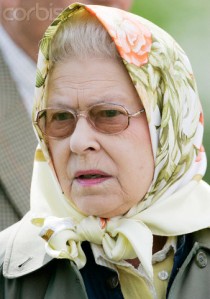
I threw out the box when we moved.
Now you are in a pickle. Hermès is rather stingy with its packaging. Don’t even think of waltzing in and asking for a box, even with your scarf in tow. It seems that the Hermès mother ship sends “just enough” boxes as scarves to their stores. One occasionally sees Hermès boxes for sale online, although eBay has banned the practice. Caution should be exercised as there seems to be a brisk business in fake boxes easier to copy than the scarves.

I have no room to store boxes.
Think again, flat boxes are the best way to store precious textiles. And, you can always opt for “storage art” as seen below:
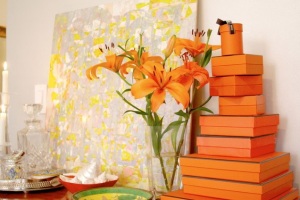
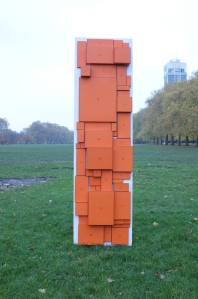
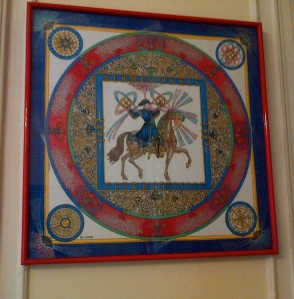
Lost the box? Don’t wear the scarf? Why not frame it? Considering the price of framing, these pieces of Hermès art priced in the range of loose scarves, could be seen as a bargain at auction. It does seem a shame, however, to hide the back of an item prized for the color on the reverse side. Besides, half the aesthetic challenge is the way the scarf looks folded rather than unfurled.
The Hermès scarf market in France right now…
It is currently a buyers market. Most French auctioneers use the 60-120 euro base for their estimations for the Hermès carré. I have found that auction houses rarely bother to call in an expert to evaluate any scarves in a sale – they are mostly concerned with the more traditional furniture and art. Very few commissaire priseurs in France sideline an expertise in vintage mode, so they are guessing. Many of the most collectible “rare” Hermès examples simply get away from them. With a minimal knowledge of Hermès scarf history, at auction you can find a 60 euro scarf with a resale value of 300 euros and over. A recent article in the Financial Times quotes a retired fashion executive, “I started buying really seriously when the price of gold went through the roof. Because of the recession, vintage carrés were being put on the market by people looking to liquidate some cash and I began to see them as a form of futures.”
For the “buyer”, the prices at Drouot Paris auctions are a bit lower than in the rest of France. If you are a “seller”, try online sales or auction houses outside of Paris. The clientage for the most part are not vintage experts and bidding is often based on a coup de coeur rather than on collectibility prices. A run of the mill issue fetching 60 euros at Drouot might go sky-high in a provincial bidding war between two ladies who just happen to like the same color.
Here are some tips and “names to drop” when buying (or selling):
The US Postal worker in Texas who moonlights as a designer of Hermès scarves…
Years ago I attended a tea with the late US Ambassador to France Pamela Harriman. I was amazed that the elegant Mrs. Harriman had chosen to wear a Hermès scarf emblazoned with…a giant turkey!

I assumed that this scarf was Lady Pam’s good-natured attempt at getting ready for Thanksgiving. Ah, how youthful aesthetic taste can be deceiving…this scarf (which I considered rather god-awful at the time) is highly collectible and now fetches up to 1000 euros at auction. Looking at an example now, I can appreciate the variety of colors. Folded, the color combinations are magnificent.
Hermès does not have just one design artist. In any given year, they employ fifty freelance artists who produce some twenty new designs. “Turkey” scarf designer is Kermit Oliver, a postal worker from Waco, Texas. Kermit, known for his paintings of native Americans and western flowers and fauna, is one of America’s most successful African-American painters…when he isn’t sorting mail. He is the only American to have designed a Hermès scarf…make that 16 Hermès scarves.

It was the founder of the Dallas department store Neiman Marcus who brought Oliver’s work to the attention of Hermès. Kermit Oliver designed his first scarf in 1984, “Pani la Shar Pawnee” depicting a Pawnee Indian chief. This scarf, although not rare, always achieves top prices at auction, even outside the US.
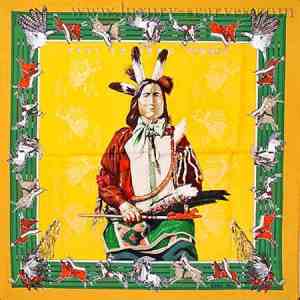
Although more than 2,000 Hermès scarf designs exist in the “frigo” (a white metal box in the firm’s offices on rue Faubourg St. Honoré), not all have been produced. Although the artists retain the property rights to the original design, the final creation is very much a collaboration between the artist and the firm’s artistic directors. Hermès tends to work with individual artists, eschewing projects like the enthusiastically proposed “Barbie Doll” scarf, out of fear of royalty battles.

It’s all in the cost of labor. After a design is finalized, it moves to the Hermès workshops outside of Lyon where is takes 750 artisans 18 months to produce a final scarf. Flottes, or skeins of raw silk, are shipped from Brazil to the Perrin company in Lyon, who has been weaving the silk for Hermes for a half century. It takes three months to weave the silk for one Hermes scarf.
Hermès’ Queen Mother of Color: Leila Menchari
There can never be too many colors in a Hermès scarf. Each scarf has an average of 27 silk-screened colors. Obviously, the more colors, the more value to an individual scarf, so whip yours out and count the colors.
“Bad colours don’t exist, only bad combinations.”, says Hermès’ Leila Menchari. At the age of 90, Madame Menchari is somewhat of a Hermès legend unto herself. For years, she has been responsible for the windows at the Hermès flagship store.
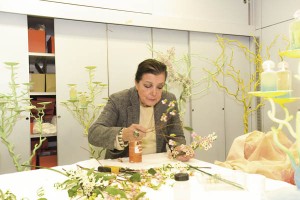
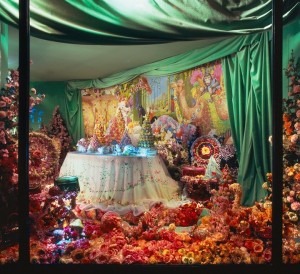
Displays so extravagant that their unveiling is an important event in the Paris art world. (A volume on these Hermès windows is one of the most expensive coffee table books in Amazon.com history…but I deviate from the subject at hand.)
Menchari, herself, designed a number of highly collectible “colorplenty” scarves like the “Regina”. (The “Regina” was even used as background for the cover of Rosamund Pilcher’s The Shell Seekers.) This design has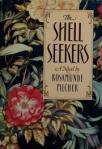 been reissued several times in a number of different base colors. If you own a Hermès, it is highly likely that it might be this popular design. Special editions were produced like the “Regina Prix de Dianne” issued in 1986 or a special “Regina” only available in the United Kingdom, in honor of Queen Elizabeth’s Golden Jubilee in 2002. The “Regina” in all its forms, although not rare, is highly collectible.
been reissued several times in a number of different base colors. If you own a Hermès, it is highly likely that it might be this popular design. Special editions were produced like the “Regina Prix de Dianne” issued in 1986 or a special “Regina” only available in the United Kingdom, in honor of Queen Elizabeth’s Golden Jubilee in 2002. The “Regina” in all its forms, although not rare, is highly collectible.
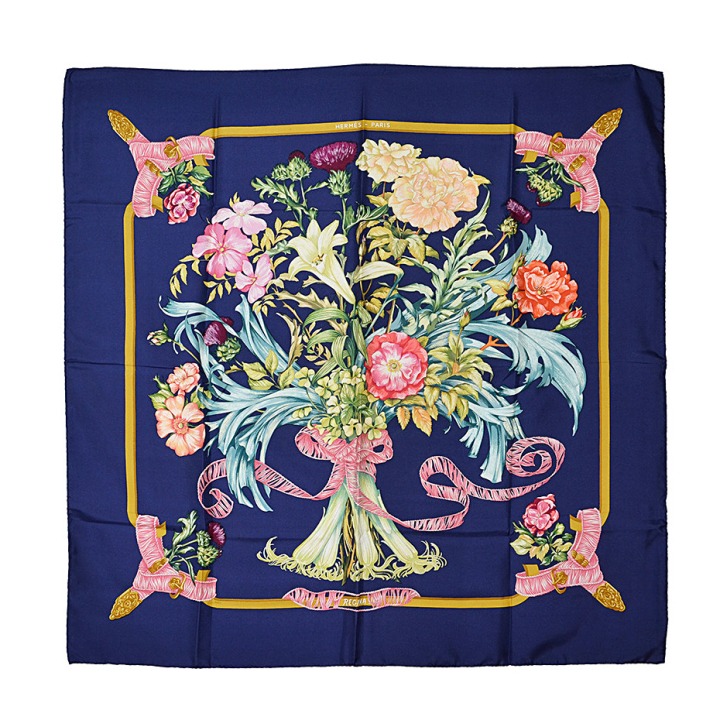
Grygkar, Ledoux and Poret: early classics
Hugo Grygkar (1907-1959): The very first Hermès scarf, a 1937 collaboration between Hermès family member Robert Dumas and artist Hugo Grygkar, is obviously very much in demand by collectors.

Reproduced from a woodcut, it depicts a traditional French board game (kind of French “Candyland”). The original design was reissued in several colors in order to celebrate the 50th anniversary of Hermès scarves in 1987, and reworked even further for Hermès centennial. Grygkar, the principal Hermès designer after

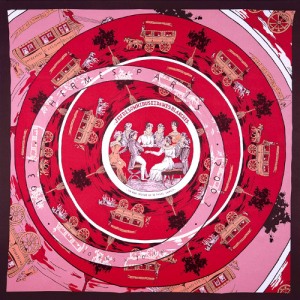
World War II, was responsible for over a 100 Hermès designs which have been issued and reissued over the years. If your scarf is horsey or nautical, there is a good chance it is a Grygkar. Unfortunately, he never signed his work.
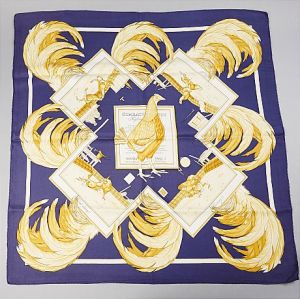
Philippe Ledoux (1903- 1975) was an artist/illustrator responsible for some 90 Hermès scarf designs. In 1947, Robert Dumas of Hermès, impressed with Ledoux’s ability to draw horses, asked him to turn his talents to the carré.
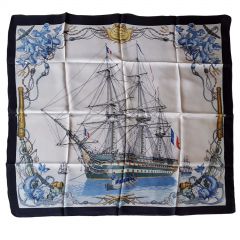
A marine enthusiast (Ledoux was illustrator for the publication Neptunia for the Musée de la Marine in Paris), Ledoux emphasized nautical themes in designs like Musée, L’Océan or Vielle Marine. His last two carrés, La Marine (a Rames) and Les Trois Mousquetaires, were finished by his nephew after Ledoux died from a motorcycle accident. Hermès issued a number of Ledoux’s carrés after his death.

Xavier de Poret (1897-1975)

You may be already familiar with Poret from an exhibition of his animal illustrations in 2013 at the Musée de la Chasse et de la Nature in Paris. Poret is also known for his sketch-book like renderings of horses, dogs and animals of the forest as

Hermès scarf designs. Amongst the Hermès designs, Poret’s work is easy to spot and a rare find for collectors. Luckily, he signed his designs prominently with an “X Poret”. If your scarf is more “pen and ink” than a wash of color, it could be a coveted Poret.
Commemorative Hermès issues
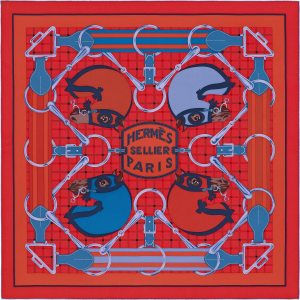

Scarves which were issued only once demand top auction prices, as well as scarves issued for special commemorations or even designs for companies. (Don’t snub your nose at that “Air France” scarf you got on the plane years ago, the resale price is more than you paid for it.)
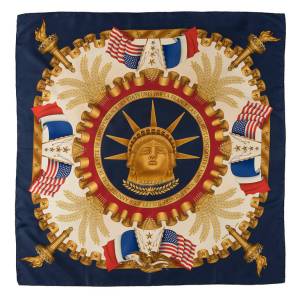

…and then there are were the jacquards
Jacquard is the term used for a raised pattern woven into a fabric. Hermès stopped producing jacquards in 2001 due to costs. A jacquard scarf will typically sell higher than a silk twill. According to Carré de Paris (a treasure trove of information on Hermès scarves), there is a pecking order in jacquard value…for example:
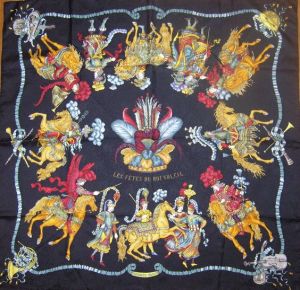

…latter day Hermès classics
Caty Latham is known for her design “Les Clés” which is one of the top ten best-selling scarves in Hermès history.
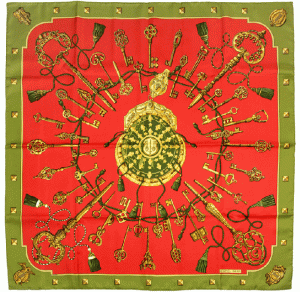
Also known as Cathy Latham-Audibert, her first two designs (“Les Clés” and “Vendanges”) have no signature; in later issues one finds “Caty”, and in the last issues “Latham”. She has been designing for Hermès for over 40 years.
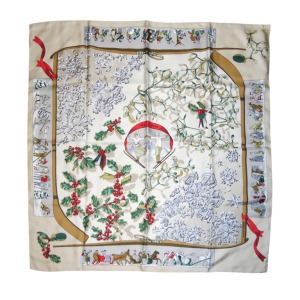
Claudia Stuhlhofer-Mayr: This Austrian designer, former Artistic Director of Augarten Porcelain in Vienna, is responsible for the scarf design which is one of the most sought after of the Hermès carres…the “Tohu Bohu”(Chaos).

Both at auction and vintage resale, this scarf always brings in top prices. (I must say that I am stumped as to why this particular design is so popular and if anyone can elucidate here, please do.)
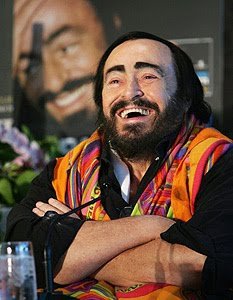
…and a most expensive tote bag sums it up
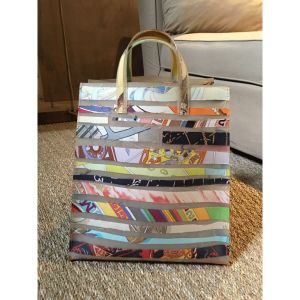
In 2005, Hermès issued a shopping tote for the exhibition “Cas de Sac” at the Museé de la Mode et Textile, Paris. Each bag was constructed from some 20 chides (scraps) from popular Hermès scarves. If you have one, remove your baguettte, bananas and clementines at once….these totes sell for over 700 euros at auction.
How to quickly spot a fake Hermès scarf
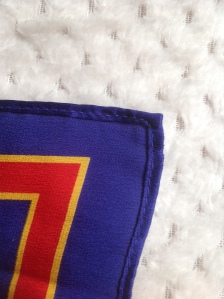
This is actually not too difficult – even if you are in the bowels of the Vingtimiglia Friday market. Modern imagery technology has enabled the more dubious sorts the ability to reproduce complex designs, but there is one thing that cannot be done cheaply – the hand-stitched hem:
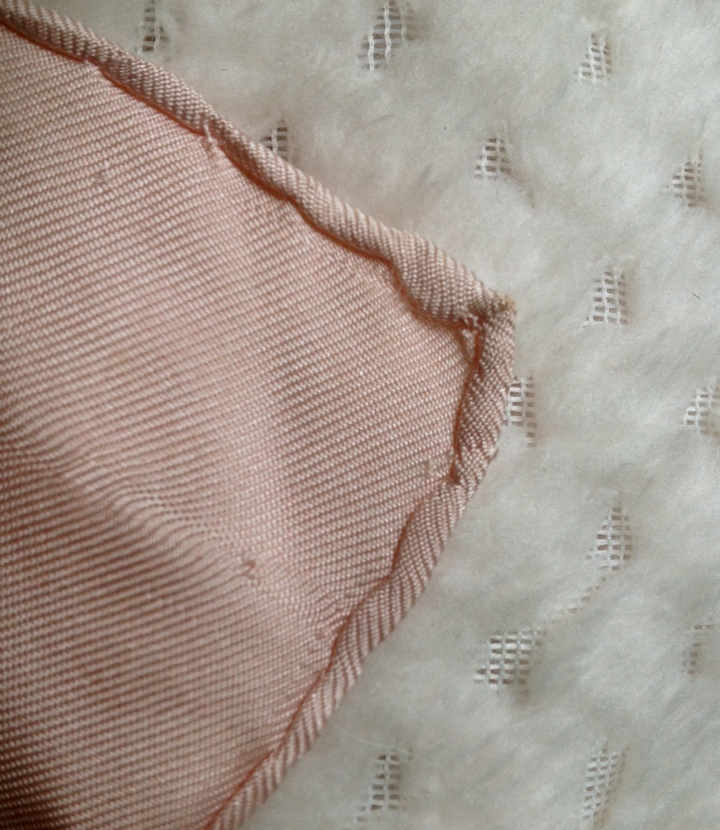
Also note that… © Hermès… is found on scarves dating after 1967.
Great reference sources for Hermes scarf research
Carre de Paris -a marvelous shop and blog dedicated to the Hermes carré
Hermes Scarf Guides -a facebook page which is an excellent encyclopedic reference with many, many photos
Hermesology – a top-notch reference by a true scholar of the Hermès carré
Heading to my scarf drawer now. Re-evaluation necessary. Thank you, Kristina!
LikeLike
Fascinating article, Kristina! I love the story about Kermit Oliver. I too may have some forgotten treasures that I need to resurrect.
LikeLike
Sallie, I was just bowled away that you had the Indian scarf! Now you know the history when you wear it.
LikeLike
Fantastic article, Kristina! I loved the story about Kermit Oliver. I too may have some forgotten treasures in my collection.
LikeLike
What a wonderful article with such thorough and interesting research! Bravo!
Sent from my iPad
>
LikeLike
Very interesting article, thank you!
LikeLike
Kristina,
I’m so glad that -quite by chance – I clicked on “Read Comments” at the bottom of the scarf page. Such a lot of fascinating info – and in your inimitable style. Bravo!!!!
Now I’m going to see if I can do the same for the marqueterie de paille.
But am I wrong in saying one doesn’t see your name anywhere??
XXX
Sally
LikeLike
Many thanks, I was trying to keep this all incognito, but that is pretty impossible these days.
LikeLike